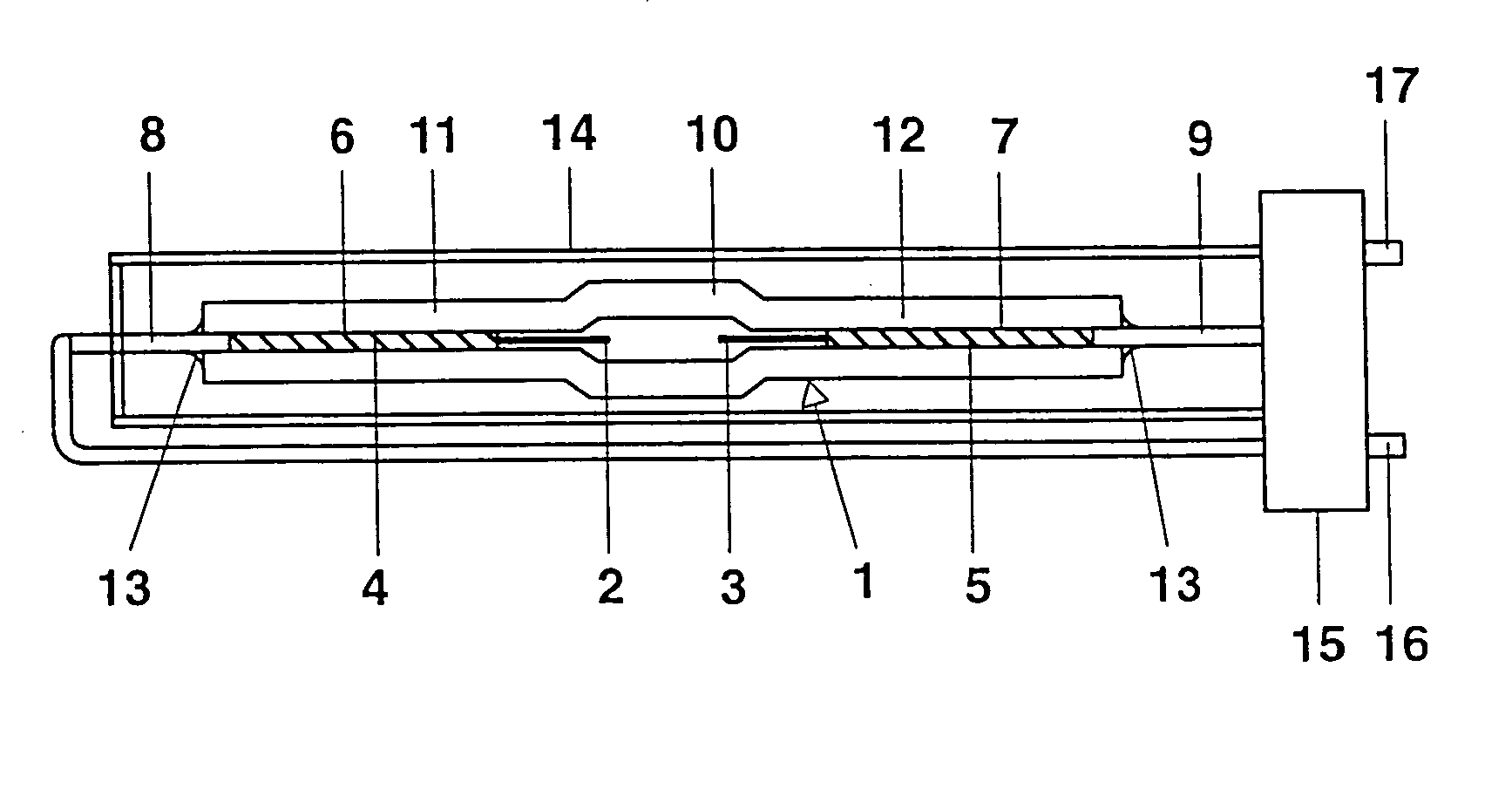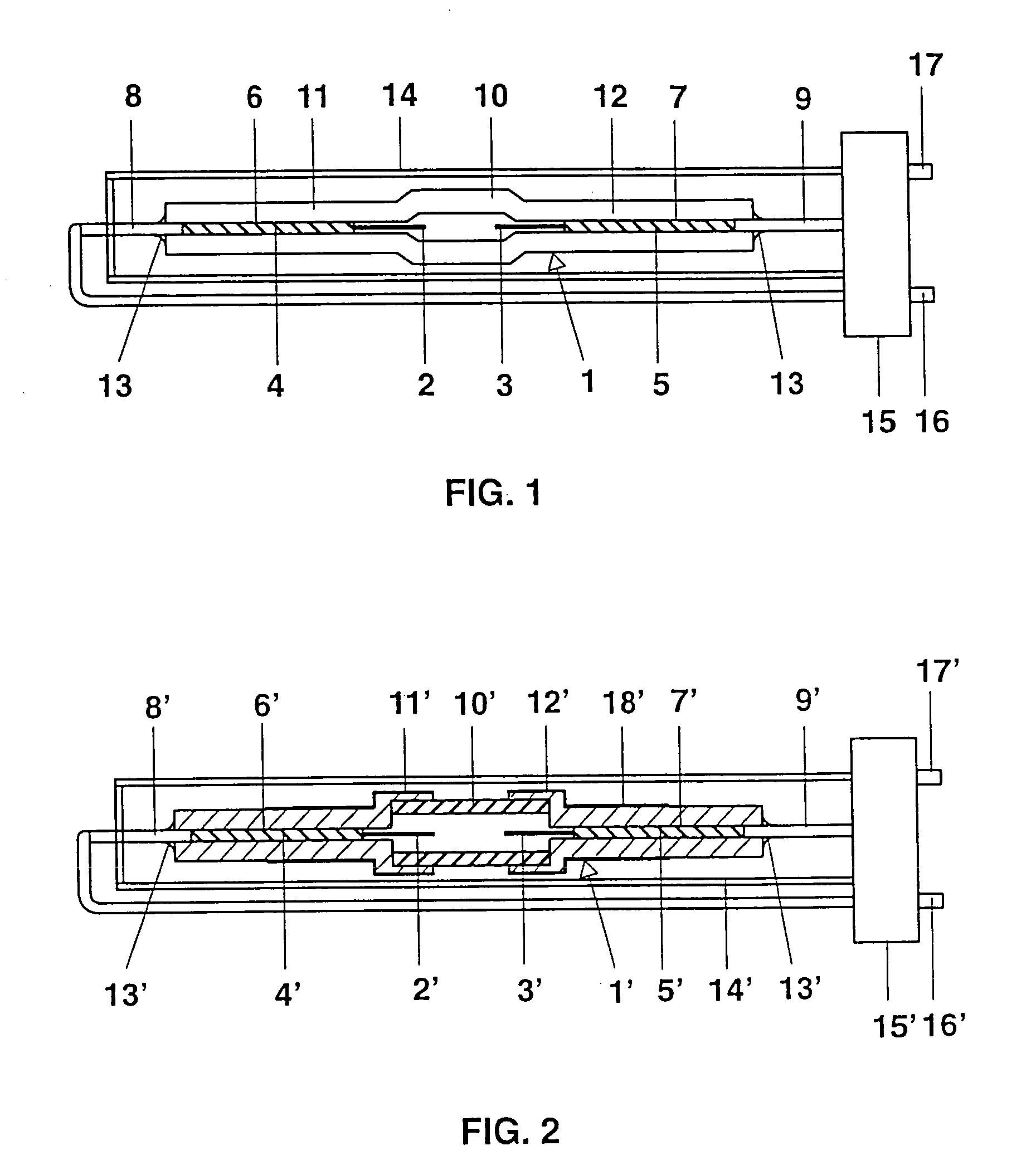High-pressure discharge lamp for motor vehicle headlamps
a technology for headlamps and high-pressure discharge lamps, which is applied in the direction of electric discharge lamps, basic electric elements, electrical appliances, etc., can solve the problem of limited discharge arcs perpendicular to the longitudinal axis of lamps
- Summary
- Abstract
- Description
- Claims
- Application Information
AI Technical Summary
Benefits of technology
Problems solved by technology
Method used
Image
Examples
Embodiment Construction
[0016] The first exemplary embodiment, which is illustrated in FIG. 1, shows a halogen metal vapor high-pressure discharge lamp with a power consumption of approx. 30 watts which is intended to be used in a motor vehicle headlamp. This lamp has a discharge vessel 1 made from transparent sintered ceramic comprising yttrium aluminum garnet. The discharge vessel 1 has a tubular, substantially cylindrical central section 10 and two end sections 11, 12, which are likewise tubular and extend diametrically on either side of this section 10. The internal diameter of the central section 10 is 1.5 mm. Two electrodes 2, 3 made from tungsten with a diameter of 0.3 mm are arranged in the longitudinal axis of the discharge vessel 1, so that their discharge-side ends project into the interior of the central section 10 and are spaced apart from one another by 4.2 mm. While the lamp is operating, a gas discharge arc is formed between the discharge-side ends of the electrodes 2, 3. Those ends of the ...
PUM
| Property | Measurement | Unit |
|---|---|---|
| internal diameter | aaaaa | aaaaa |
| distance | aaaaa | aaaaa |
| pressure | aaaaa | aaaaa |
Abstract
Description
Claims
Application Information
 Login to View More
Login to View More - R&D
- Intellectual Property
- Life Sciences
- Materials
- Tech Scout
- Unparalleled Data Quality
- Higher Quality Content
- 60% Fewer Hallucinations
Browse by: Latest US Patents, China's latest patents, Technical Efficacy Thesaurus, Application Domain, Technology Topic, Popular Technical Reports.
© 2025 PatSnap. All rights reserved.Legal|Privacy policy|Modern Slavery Act Transparency Statement|Sitemap|About US| Contact US: help@patsnap.com


